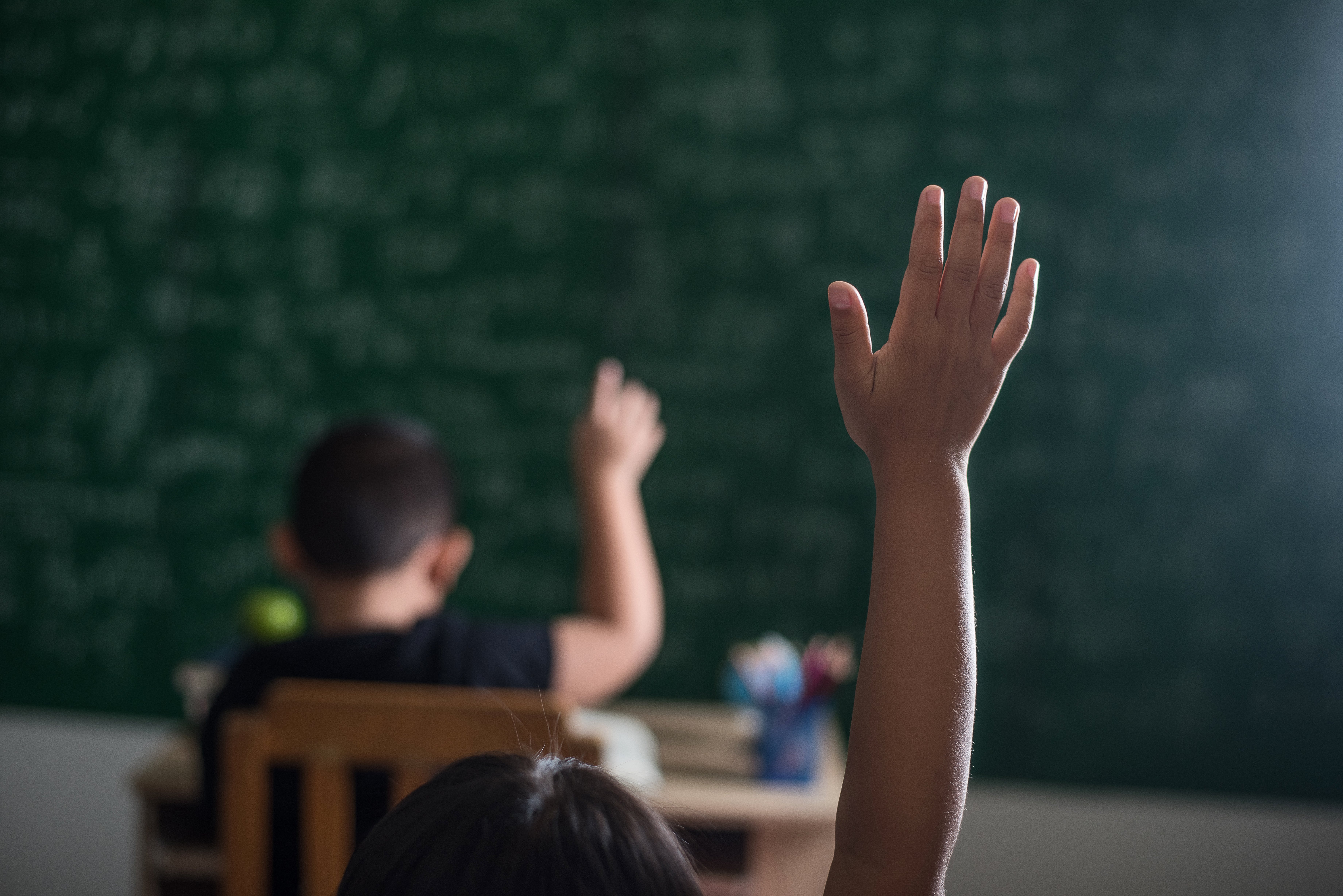
Sep 28, 2022 2:19:53 PM
Are our efforts to achieve equity for academically struggling, marginalized students actually limiting the ability of our higher-achievers to reach their full potential—including those students we legitimately say we want to help the most–young people who are Black, or Brown, or low-income? Are we chipping away at expectations and rigor more broadly to narrow achievement gaps?
There is reason to believe parents, policy makers and the public, including those committed to equity, are worried this is the case but fear saying so openly. And they are right; speaking up on such sensitive topics could earn them the label “anti-equity” or even “racist.”
But the recent exodus of families from traditional public-school districts is a warning message—if we choose to hear it.
Let me take a moment to acknowledge how strange it feels to ask how we can better unleash academic talent at the same moment we know children, especially the most vulnerable, are hurting and inadequately supported after massive school disruption. But the question is essential.
For some, a reason enough to ask is that our competitor countries produce over three times as many advanced performers as the US, and that even the performance of our wealthiest students at advanced levels pales in comparison to our top eleven competitor countries. Two economists estimate that a 10-point increase in the share of top-performing students in a country adds 1.3 percentage points of additional GDP growth each year. Even if these estimates are off by a factor of 50% or more, they alert us to the hazards to our entire country if we ignore the economically transformational power of fully supporting students on the higher end of achievement.
Others may be concerned about the social and moral costs of neglecting what, for them, educational “excellence” and social mobility require—the cultivation of talent and achievement of all children, across all races, classes and ZIP codes, to their highest potential.
It is understandable that raising concerns about how our schools currently are balancing equity and excellence would provoke strong responses among those for whom closing achievement gaps to advance equity is the paramount goal. No doubt, their case is bolstered by our country’s egregious history and current reality: racism and segregation, gaping educational resource inequalities, and widening economic inequalities.
But it’s hard to believe that in the long term, silence on this issue is the path to building a healthy, well-functioning public education system that advances opportunity for all.
The good news is, each time those deeply committed to equity choose to discuss these topics, they make it easier for the next person to do the same. That, in itself, may be a worthy goal.
Let’s turn to the three questions that provide a useful starting point for these conversations.

A well-known quote in education circles reminds us: “Talent is equally distributed; opportunity is not.” Evidence supports this assertion. We can see this most clearly by looking at research on low-income and Black children who start strong in their earliest school years.
Research shows that high-achieving early-elementary students who are low-income or Black are more likely than others to lose ground as they move through school. The Black-white gap in math and reading grows most quickly for Black kindergartners with above-average math and reading skills. Of low-income first graders who score in the top 25% on reading tests, about half will fall below that quartile by fifth grade.
Another study found the average math performance of high-achievers in high-poverty schools declining only slightly between third and fifth grade (from the 83rd to the 82nd percentile). Their peers in low-poverty schools also plateaued–but at the 97th percentile. Though the good news here is that the gap didn’t widen, the size of that gap prompts questions about what is happening before third grade.
There are certainly many possible reasons why low-income children and Black children who enter school showing high potential could find their progress hindered over time. Limited resources, competing priorities, inadequately trained teachers, poverty and racism undoubtedly contribute. But so do intentional, sometimes decades-old, choices made by education policy makers, administrators and advocates alike, especially those affecting higher-poverty school districts.
To begin, many of these leaders, as well as many educators on the ground, have opted to focus almost exclusively on supporting lower-performing students, especially those who are marginalized. They made this choice even if it led to rejecting effective strategies to support high-performing children, including those who are Black, Brown or low-income, as the following examples demonstrate.

Most obviously, new and tougher federal accountability rules—first introduced in the mid-1990’s and dramatically strengthened by the No Child Left Behind Law of 2001—centered school accountability on the goal of getting low-performing students up to a “proficiency” bar, while ignoring the gains or losses of higher performers.
On the one hand, the extent of achievement gaps made it logical to prioritize gains made by lower-achievers generally and, in particular, Black students, to whom our country has a specific responsibility, given our American history of slavery and Jim Crow, and persisting discrimination.
On the other hand, this focus on raising underperforming students to proficiency appears to crowd out the equally important need to nurture the talents of higher-performing students, especially those from underrepresented backgrounds, whom we see are not consistently sustaining their early successes or reaching their full potential. Unsurprisingly, in a 2008 national teacher survey, teachers reported focusing on their struggling students well above everyone else (while feeling torn about it).
Accountability systems’ narrow attention to bringing students up to proficiency also may be an important reason why schools continue their entrenched, biased practices of offering remedial-level content to low-income and underrepresented students who do well on or even exceed grade-level content.
Starting in the 1980’s, schools rightly abandoned their segregated, stigmatizing, inflexible and discriminatory tracking systems; yet we resist talking about what schools put in their place.
Many schools still organize their classrooms based on what they think will benefit their struggling students. In practice, this typically leads to one teacher in a single classroom working with students across as many as nine-to-eleven grade levels of ability. That teacher is then asked to “differentiate” instruction to meet each student’s needs.
Although the research on differentiation is limited and mixed, the shameful history of tracking casts a long shadow, making it hard to discuss grouping by ability at all. This limits discussion even of options for flexible, short-term groups of students by ability in order to maximize their learning. While we must never go back to old-school tracking, we do need to make it safe to discuss alternatives to so-called “differentiated instruction.” This necessitates grappling with the research showing that more structured, performance-based groupings -- either within one or multiple classrooms -- benefit higher-performing students, without hurting, or possibly even helping, other students.
.jpg?width=5472&name=santi-vedri-O5EMzfdxedg-unsplash%20(1).jpg)
More recently, we can see the quest to bring up low-performing and vulnerable children morphing into concerted efforts to dismantle advanced learning opportunities for higher achievers, including selective schools, gifted programs, honors classes or other opportunities for acceleration well beyond gifted programs. For example, recently on the chopping block: selective-admissions middle schools and elementary gifted programs in NYC; accelerated middle and high school math classes (and the most coveted selective high school) in San Francisco; fourth through sixth grade advanced learning programs in Boston; the accelerated cohort program in Seattle. Many cities which have retained their selective schools, Chicago, Fairfax County, and Philadelphia among them, have significantly expanded their admissions criteria, eliminated admissions tests, instituted a partial lottery and/or added other requirements to ensure geographic and/or economic representation.
Again, there are legitimate justifications for these efforts.
Many selective schools and gifted programs have racist origins and egregiously under-represent Black and Latino children—which, for example, a requirement to accept top students from every middle school often partially mitigates. It, too, is undeniable that maximizing individual children's academic potential risks maintaining disparities between demographic groups.
The aversion to testing, however, overlooks that a high test score, not grades or often-biased teacher recommendations, has often provided underrepresented children their entry ticket to higher-level education opportunities. When Broward County, for example, tested every student for entrance to its gifted programs, it increased the entrance rate of Latinos by 130 percent and of Black students by 80 percent. This does not mean a single test score should be the sole means of identification for selective programs (which very few schools even do), but it should cause us to pause before eliminating them.
It is easy to see how these policies, taken together, could constrict the education opportunities and mobility escalator for higher-achieving students across all races and income levels, but especially those whose families don’t have the luxury of opting out of their local public schools or the resources to supplement in-school programs. While the media has focused on the often-indisputable effects of these policy changes on high-achieving Asian American students (who not infrequently are from diverse and low-income/working class families), they are not the only group affected by them.
It is absurd to suggest that hampering one group’s achievement in the name of closing achievement gaps will benefit those performing below them. Or to believe that pitting parents against each other to access a capped, or even shrinking, number of more advanced opportunities for their children maximizes equity or excellence.
New York City’s experience illustrates the consequences for higher-achieving Black students when systems fail to support our most talented underrepresented students early and aggressively. There was a decades-long campaign to eliminate many of the city’s accelerated and honors programs and middle school gifted programs, especially in nonwhite districts. Subsequently, admissions of Black and Latino students to the selective high schools significantly dropped. Then, the absence of minority students in selective high schools fueled calls to eliminate them. Although cause and effect haven’t been proven, intuitively this suggests that New York City’s outcome results from our failure to nurture the academic skills of marginalized students who perform well in elementary school and may be able to go further faster.
In the short term, we may be wise to fight less about the relatively few highly selective high schools in each community (which may not even sufficiently support underserved students) and invest more in supporting younger academically talented underrepresented children to compete at the highest levels in high school.
Research now shows that this requires identifying, supporting and nurturing that talent from the beginning by expanding, not disbanding, programs for higher achievers (well beyond the definitionally gifted), launching these programs in every school, screening every child at multiple entry points for participation, and offering other opportunities for acceleration.
Nobel prize winner David Card and Laura Giuliano demonstrated as much when finding that even in the highest-poverty schools, a separate fourth-grade classroom for the top‐performing students significantly boosted their performance through sixth grade. As significant, Black and Latino students who were high achieving based on state tests, not those with the highest IQs, benefited the most. Contrary to popular belief, Card and Giuliano also found that the separate classrooms did not disadvantage the non-selected students, even those close to the admissions cut-off (i.e., there were no “spill-over effects”).

Our neglect of our higher performers now has taken an additional turn, as some districts, under the banner of “equitable grading strategies,” are eliminating homework deadlines, extra-credit, late penalties, and even grades across all of their schools. Clark County, Nevada, a 360,000-student school district including Las Vegas, recently embraced a new grading policy that eliminates a grade below 50, allows students to retake tests and prohibits behavior, late work, and attendance from being factored into grades. Arlington, Virginia, when considering a similar proposal, explained its rationale: poor, minority children have too few resources and too many responsibilities to complete homework correctly and on time.
Several rationales guide adopters of equitable grading. Disparate testing outcomes among different student populations often reflect generations of discrimination and disinvestment. In addition, there has been too much testing and too much test-based accountability. Ultimately, mastery of content should take precedence over timely homework submission, especially for students facing extraordinary out-of-school challenges. (Although, truth be told, it is hard to imagine many students repeatedly skipping class or missing homework deadlines and still mastering the content.)
The growing de-emphasis on rigor, academic standards and results-based accountability, though, fails to grapple with two historical trends: Beginning in the 1990’s, equity advocates saw strong standards, state testing and accountability as linchpins to close achievement gaps: Standards could anchor uniformly high expectations; performance data would illuminate equity gaps and support accountability for better results. And they may have been right: The era of strong federal standards, assessment and accountability mandates dovetailed with two decades of achievement gains and smaller income-based achievement gaps.
Roughly around 2012, as policy makers began rolling these mandates back, achievement plateaued and then continuously declined. Although, again, causation has not been established, it is reasonable to ask: Are we eliminating tests and grades to mitigate, or merely mask, achievement disparities? If we expect less of all children, will they give us less? Which workplaces will consider it acceptable to repeatedly show up late or decline to complete tasks on time?
.jpg?width=6016&name=julien-l-sLrw_Cx6u_I-unsplash%20(1).jpg)
Families will ask these questions, even if others don’t. For even if parents may have wanted schools to loosen the academic reins during the pandemic, only to a point. And woe to those school systems who say to large swaths of economically or academically better-off families: “Your children are not our concern.”
Families who have options will vote with their feet and leave the system (or enroll in a private or charter school), taking their tax dollars elsewhere and exacerbating the two-tiered system we want to avoid. In leaving, parents are doing what all parents with options, even those deeply committed to equity, will do: seek out schools they believe will best meet their children’s needs, now and in the future.
While there was a massive exodus of parents from traditional public schools during pandemic school closures, significant enrollment declines are continuing, with kindergarten classrooms taking the biggest hit (beyond what demographic changes would predict). One parent survey, for example, shows that between spring 2021 and spring 2022, there was a nine percent drop in families saying their children were enrolled in traditional public schools.
Unhappy parents, lacking other options, also may be making their views known in the secrecy of the ballot box, if the recent elections for governor in Virginia, mayor in New York City and the successful school board recall in San Francisco are a guide.
It’s fair to ask which policies districts, local governments, academics, and advocates are imposing on other people's children which they would reject for their own.
Billions of federal Covid funds may be blunting the budgetary impact of this exodus—but not for long. School systems must understand which of their policies may be driving away their families -- for enrollment declines mean less overall school funding which leaves struggling students with even less.

There is a lot we still don’t know about how schools can effectively maintain high expectations and support the academic needs of students across all achievement bands while redoubling their commitment to and investment in our most vulnerable students.
The first recommendation is to conduct additional research on such key questions as: what school practices cause young Black and Latino higher achievers to lose ground as they move through school? How do academically selective programs/schools affect their students academically, emotionally, and professionally, including over the longer term? (Current studies generally rely on short-term measures, such as test score gains and SATs). How pervasive is equitable grading?
How do different student grouping strategies affect all students’ outcomes? What training do teachers need to advance students performing at widely different levels? Why are parents leaving some districts but not others?
The second recommendation is to start insisting that asking questions, or even expressing concerns, about whether our current equity approaches may be undermining, not supporting, excellence, does not make one right-wing, anti-equity, or racist. Rather, it likely puts one squarely in the camp of a majority of parents, the public and even policymakers who may not have the loudest microphones but want to explore the “both/and'' on these complex issues.
Simply modeling how to have a healthy debate on such a fraught topic provides an important example for younger leaders. It is undeniable that advancing academic ability and maximizing children's academic potential risk maintaining disparities between demographic groups, but, as we have argued, so may the alternative. So, what is the downside of making it easier to discuss these tensions, as we pursue still-elusive and inevitably incomplete solutions?
Jessica Levin’s leadership in the education sector includes co-founding Education Leaders of Color (EdLoC), launching TNTP’s research and policy practice, developing K-12 policy in the office of the US Deputy Secretary of Education, teaching at Harvard’s Graduate School of Education and organizing parents and communities.
Few issues in education spark more tension and debate than standardized testing. Are they a tool for equity or a burden on students? A necessary check on school systems or a flawed measure of...
Charter schools are public schools with a purpose. Operating independently from traditional school districts, they're tuition-free, open to all students, and publicly funded—but with more flexibility...
Despite the benefits of a diverse teaching force, prospective teachers of color fall out of our leaky preparation pipeline at every stage: preparation, hiring, induction, and retention. Here’s what...
Ed Post is the flagship website platform of brightbeam, a 501(c3) network of education activists and influencers demanding a better education and a brighter future for every child.
© 2020-2025 brightbeam. All rights reserved.
Leave a Comment